In the 1950s, woodblock print artist Hide Kawanishi produced a series of color illustrations that depicted the changing city of Kobe after WWII. In 1962 he published the artwork in a book titled One Hundred Scenes of Kobe (神戸百景色). It would become the artist’s last major accomplishment before passing away in 1965.
Table of Content
- One Hundred Scenes Of Kobe – Part 1
- THE PORT OF KOBE
- ENTERING KOBE
- TOURISTS ON THE PIER
- MOTO-MACHI STREET AT YEAR-END
- NEON LIGHTS OF MOTO-MACHI
- NUNOBIKI RESERVOIR
- SHIOGAHARA PARK
- FOREIGN CEMETERY
- CHILDREN’S BOTANICAL GARDEN
- BOTANICAL GARDEN
- ROKKO DAIRY FARM
- OKU MAYA (UPPER MT. MAYA)
- TENJOJI TEMPLE
- MT. ROKKO CABLE CAR
- MT. ROKKO AT NIGHT
- ROKKO-SAN GOLF COURSE
- ROKKO DRIVEWAY
- KAMOKOGAHARA HOUSING AREA
- HAKUTSURU ART MUSEUM
- NADA’S “SAKE” BREWERY
- MERCHANT MARINE COLLEGE
- NADA INDUSTRIAL AREA
- FUKIAI
- CANADIAN ACADEMY
- OHJI ZOO
- About Hide Kawanishi
- Frequently Asked Questions
One Hundred Scenes Of Kobe – Part 1
Some 60 years later, Takayuki Kita, enchanted by the work of Kawanishi, spent 2 years hunting down each and every location. “I was driven by the magic of Hide Kawanishi in his enthusiasm of grasping the deep spirit and fantasy of Kobe out of the unique architecture scattered in the city,” says the traveler, who arranged his contemporary photographs alongside the artwork.
The illustrations themselves are beautiful and obviously can stand on their own. But it’s also a fascinating and surreal exercise to compare the two scenes. All 100 illustrations, along with their contemporary photographs (and google map location), are available on the official Kobe City website. And used copies of the original book are also floating around the internet if you’re interested.
THE PORT OF KOBE
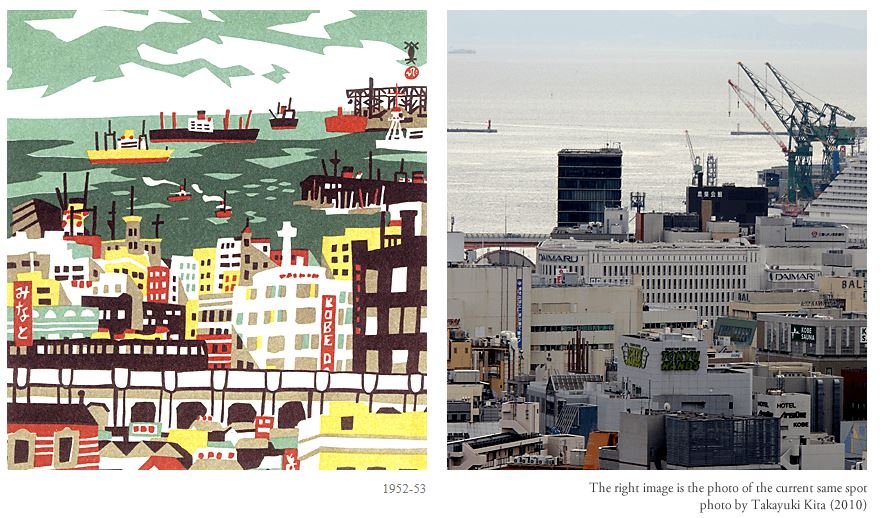
Kobe has a one-thousand year history as a trading port between Japan and the Asian Continent.
Since Kobe was officially opened as an international port on January 1, 1868, it has played an important role in the development of Japan.
ENTERING KOBE
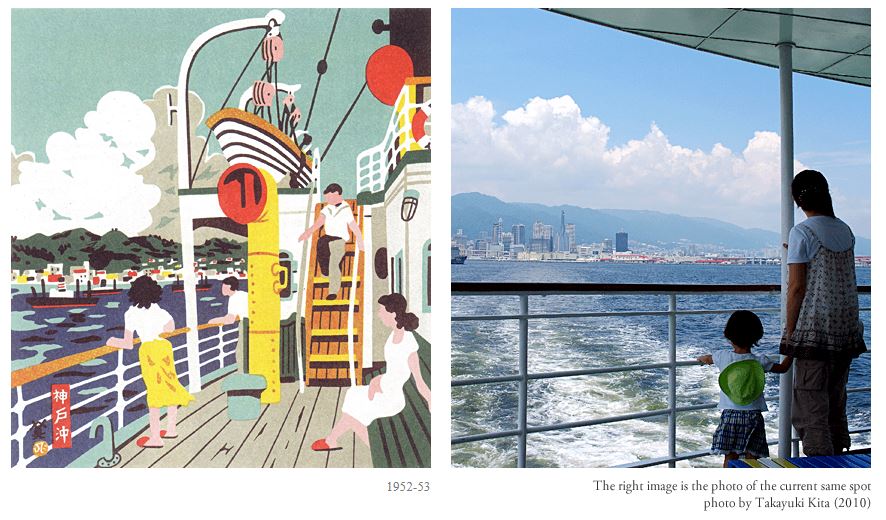
Merchant ships from over 30 countries stop at this scenic port. Kobe handles 37% of Japan’s total exports and 20% of its imports.
TOURISTS ON THE PIER
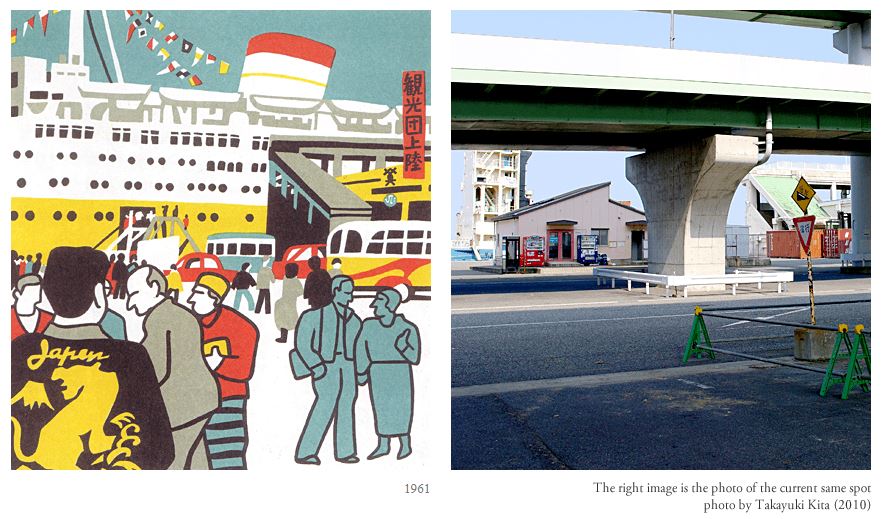
The number of tourists who visit Kobe increases each year. When an ocean liner docks in Kobe, the visitors tour not only Kobe but the famous ancient cities of Kyoto and Nara as well.
MOTO-MACHI STREET AT YEAR-END
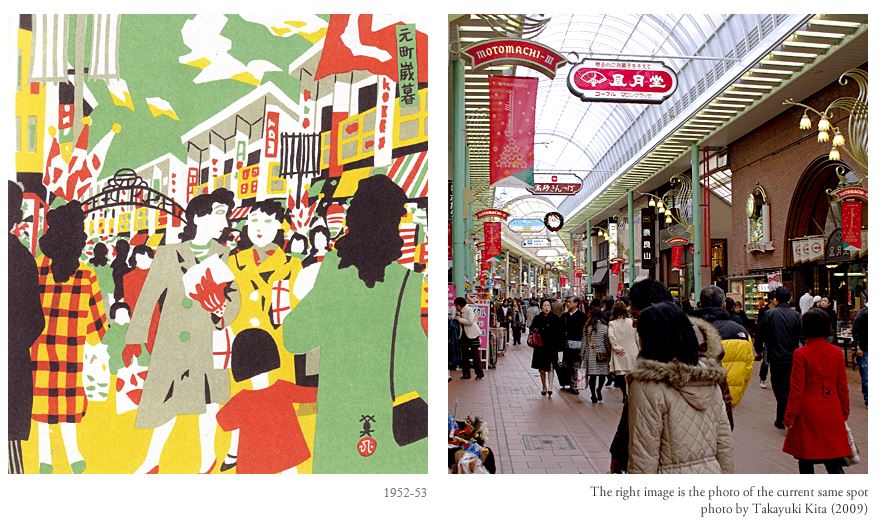
This shopping center in Kobe covers six blocks of streets from the Daimaru Department Store to the Mitsukoshi Department Store. Moto-machi at year-end is crowded with people shopping in preparation for the New Year.
NEON LIGHTS OF MOTO-MACHI
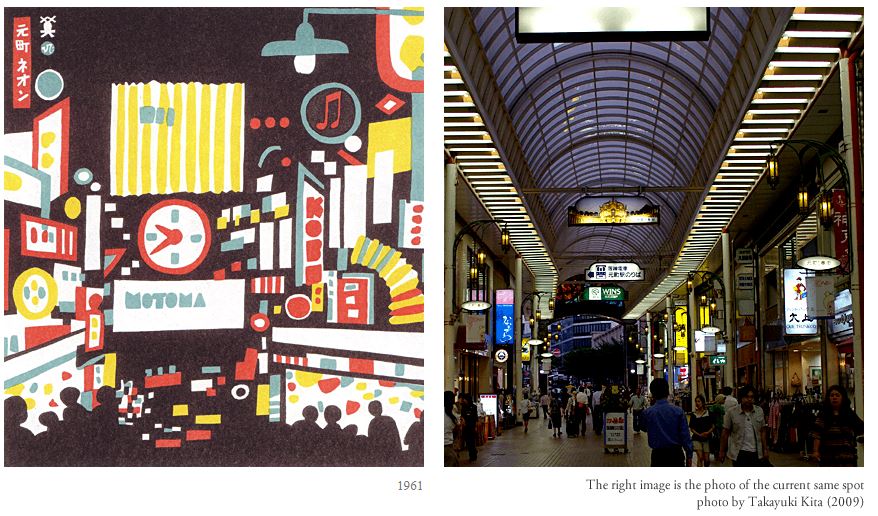
When darkness comes to Kobe, the spectacular neon lights and a large clock light up the entrance of Moto-machi with their colorful illumination.
NUNOBIKI RESERVOIR
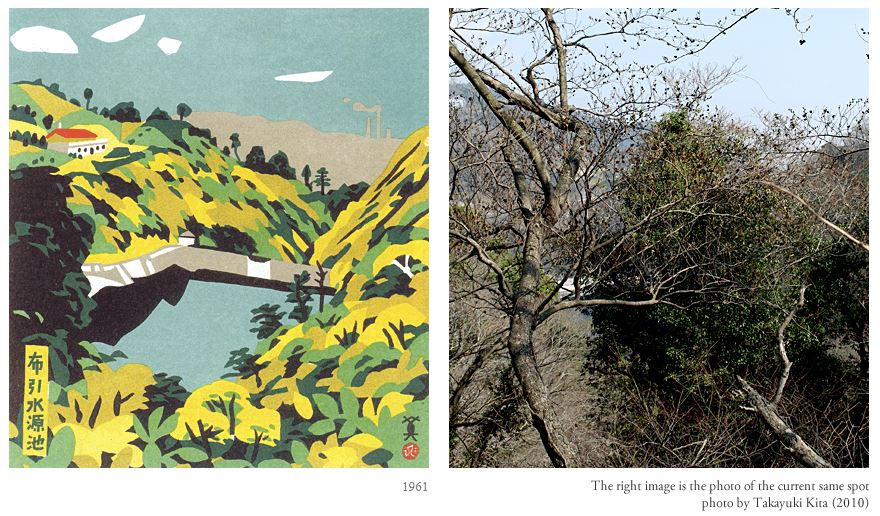
Kobe’s first water reservoir, the Nunobiki reservoir was completed in March 1900, and has a total capacity of 771,000 tons. It is from this reservoir that “Kobe Water” is supplied to all incoming foreign ships.
SHIOGAHARA PARK
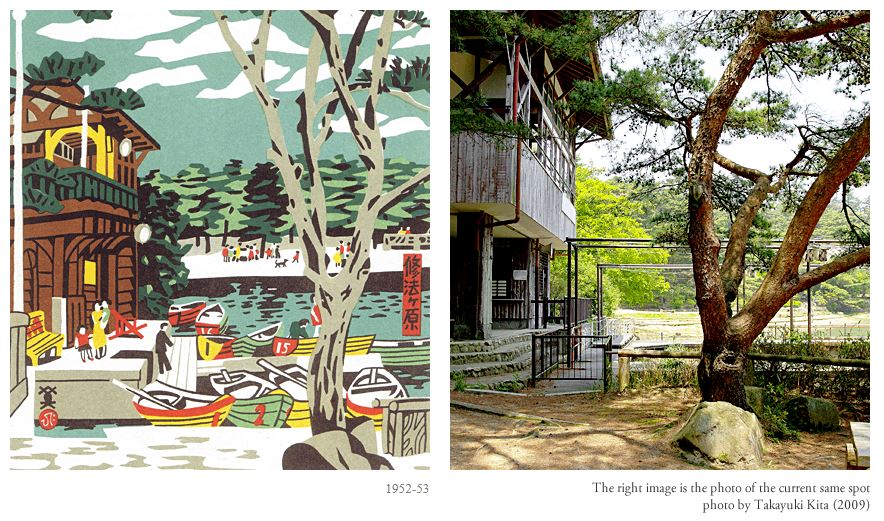
Fifteen minutes drive from the heart of the city lies this quiet park located 480 meters above the sea. Near the park is a natural botanical garden and the “Foreign Cemetery”.
FOREIGN CEMETERY
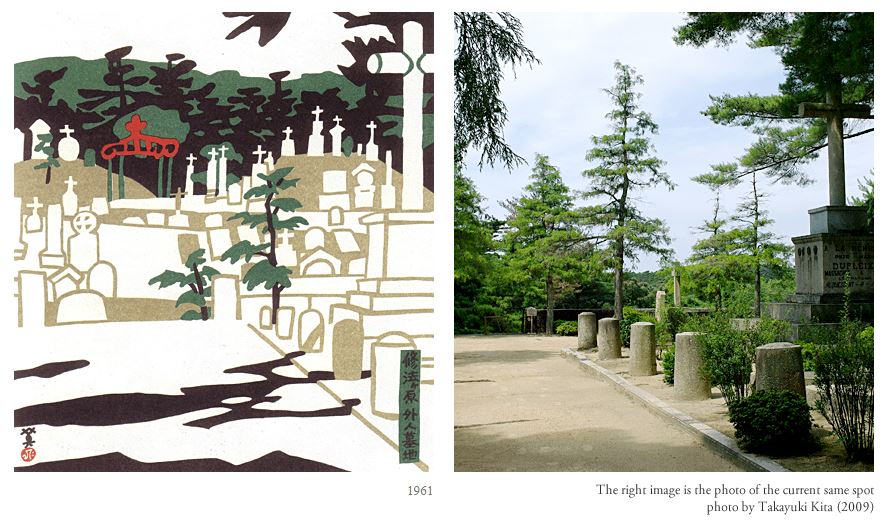
The foreign cemetery covers an area of 139,000 sq. meters. It has its own chapel and offers an eternal resting place for about 2,130 foreigners of 44 different nationalities.
CHILDREN’S BOTANICAL GARDEN
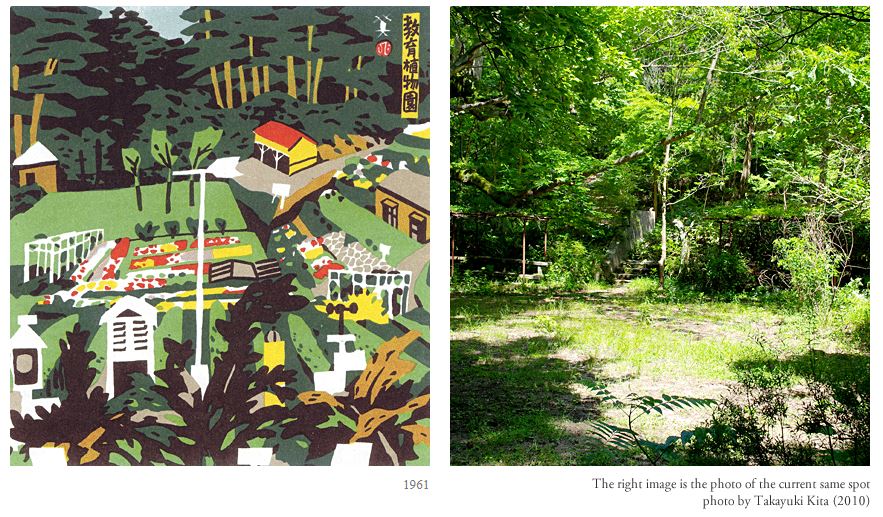
Next to the Municipal Garden, another Botanical Garden, specially designed for educating children, is located. The Garden features 400 different trees, 600 kinds of plants and over 30 varieties of small birds.
BOTANICAL GARDEN
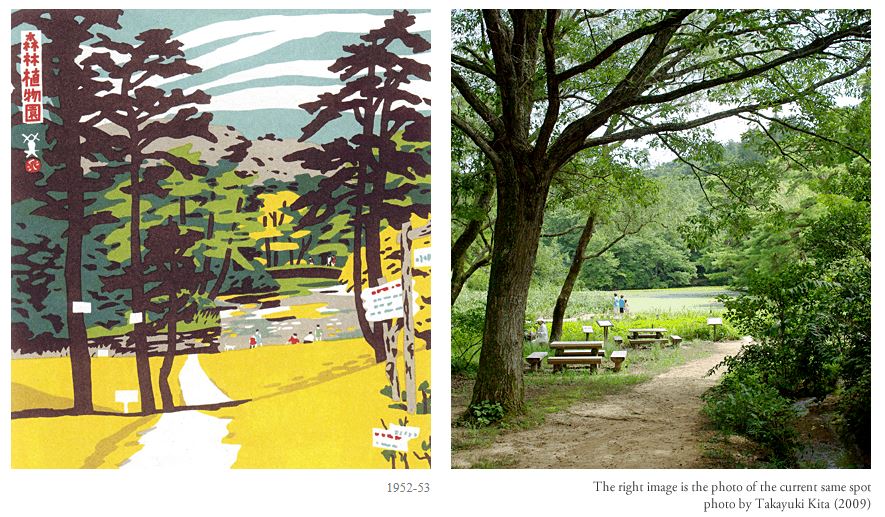
The Municipal Botanical Garden, located on the slope of Mt. Futatabi, is approximately one million square meters in area. The Botanical Garden, one of the most popular picnic areas in Kobe, has 1300 different varieties of plants and trees.
ROKKO DAIRY FARM
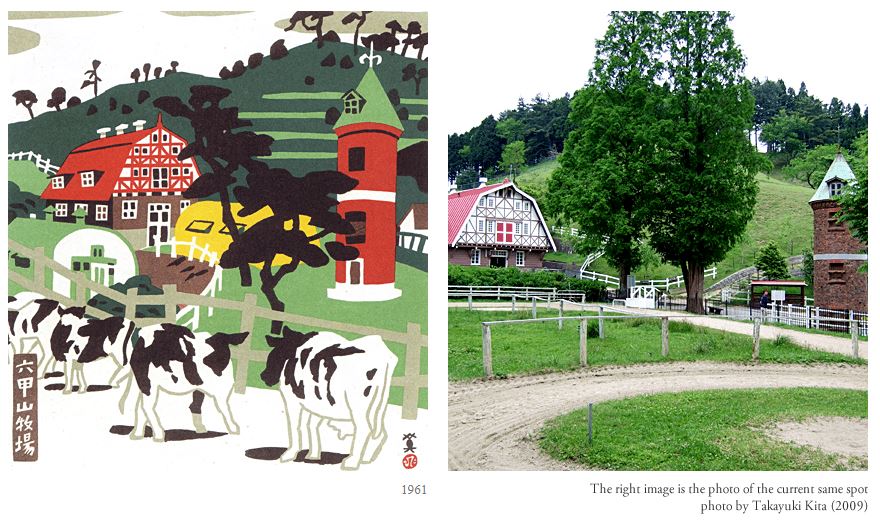
When Mt. Rokko became a national park in 1956, the city established a dairy farm on the gradual slopes of Rokko, primarily for tourists to see its facilities and enjoy fresh milk.
OKU MAYA (UPPER MT. MAYA)
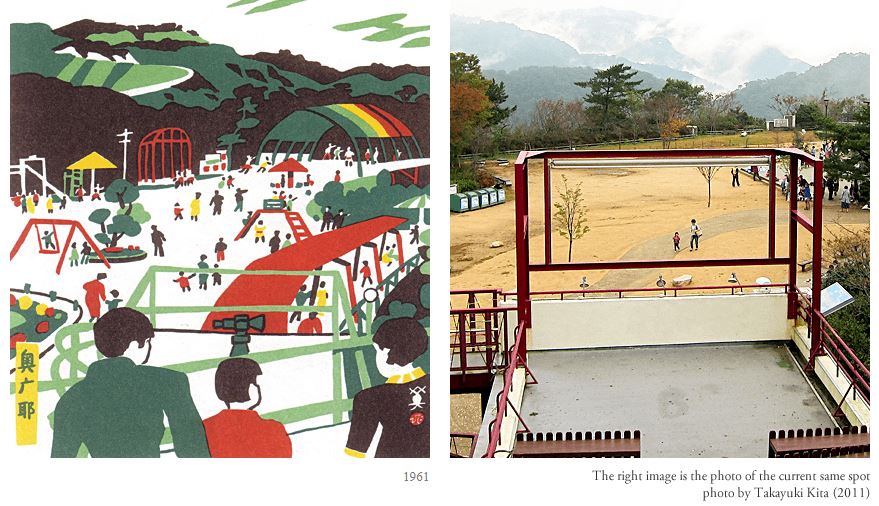
The summit of Mt. Maya can easily be reached by cable car or ropeway. All kinds of recreational facilities are available for both children and adults.
TENJOJI TEMPLE
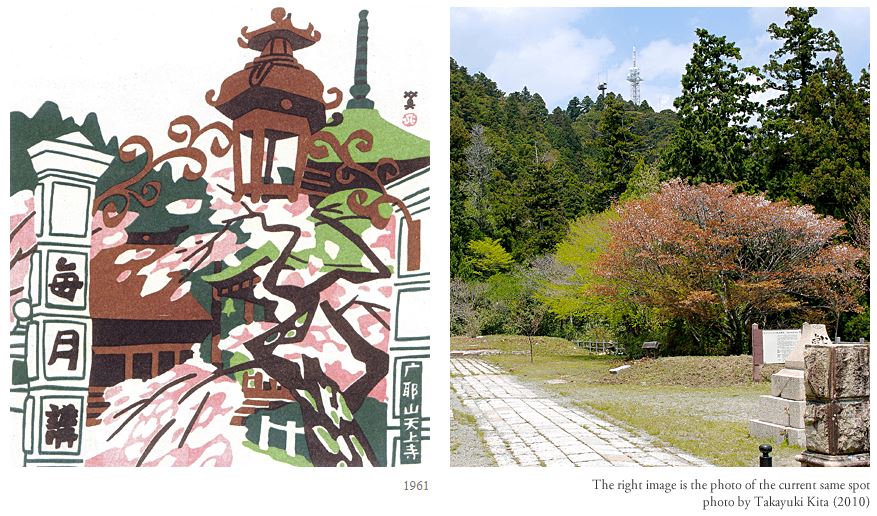
Tenjoji Temple built on Mt. Maya, 700 meters above sea level and surrounded by a natural forest, is said to have been established by Kobo Daishi (774-835) after his return from China.
MT. ROKKO CABLE CAR
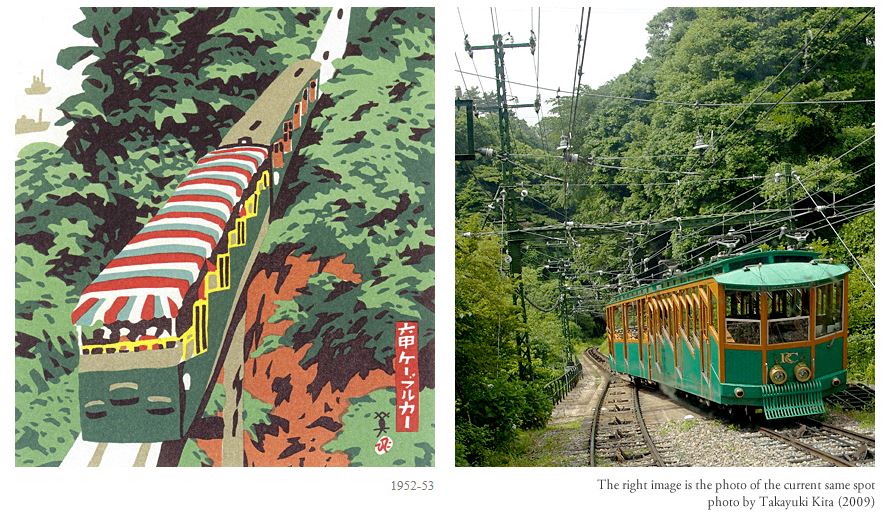
The summit of Mt. Rokko, 936 meters high, is a famous tourist attraction in Kobe. A cable car covers the distance of 1.8 kilometers to the top in less than 10 minutes.
MT. ROKKO AT NIGHT
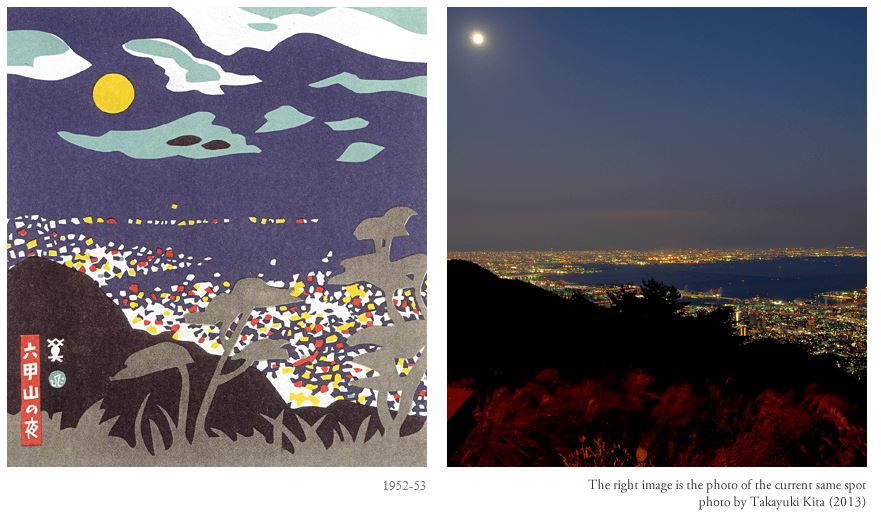
Mt. Rokko is only 900 meters high, but the view from its top is magnificent. “A million dollar view” from Rokko at night embraces Kobe and its neighboring cities, sparkling with lights and their reflection on the sea.
ROKKO-SAN GOLF COURSE
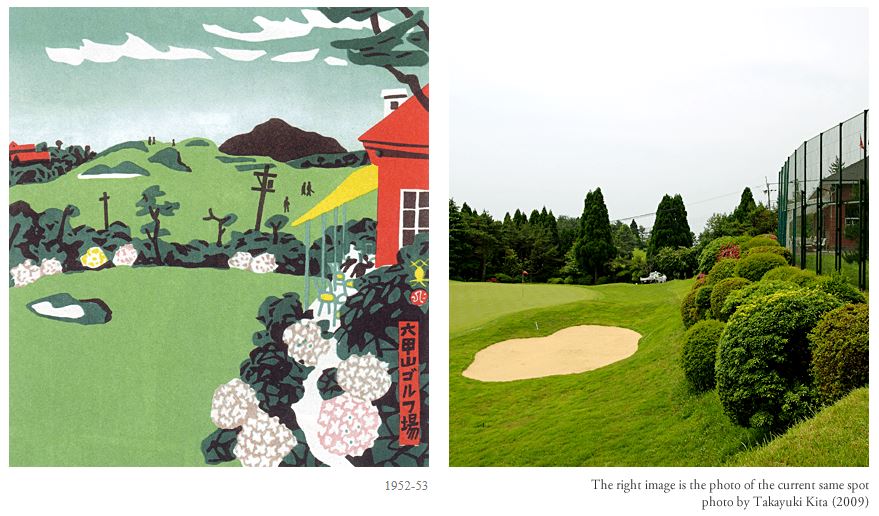
Located 900 meters above sea level, the Mt. Rokko golf course is the oldest in Japan. It has 18 holes covering an area of 330,000 square meters.
ROKKO DRIVEWAY
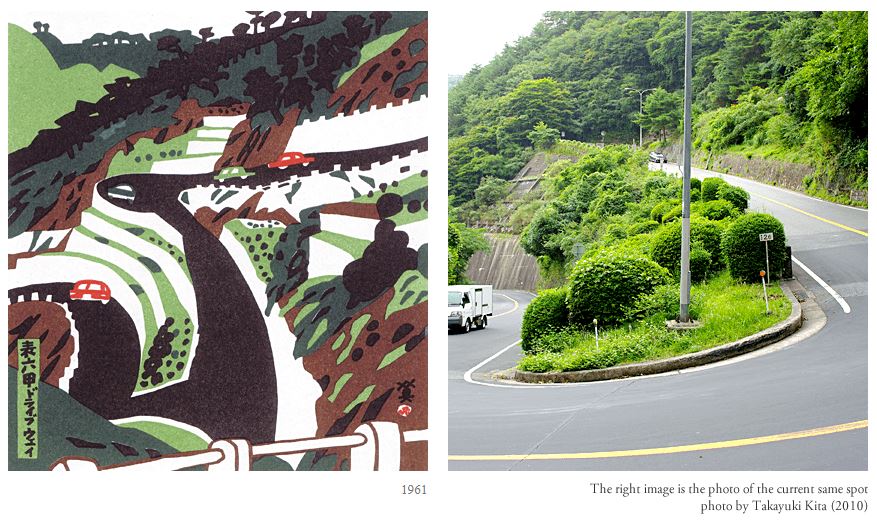
By driving up the winding Rokko driveway enjoying the distant views of the Osaka Bay, you can reach the summit of Rokko in 30 minutes. It is a toll road about 5 kilometers in length.
KAMOKOGAHARA HOUSING AREA
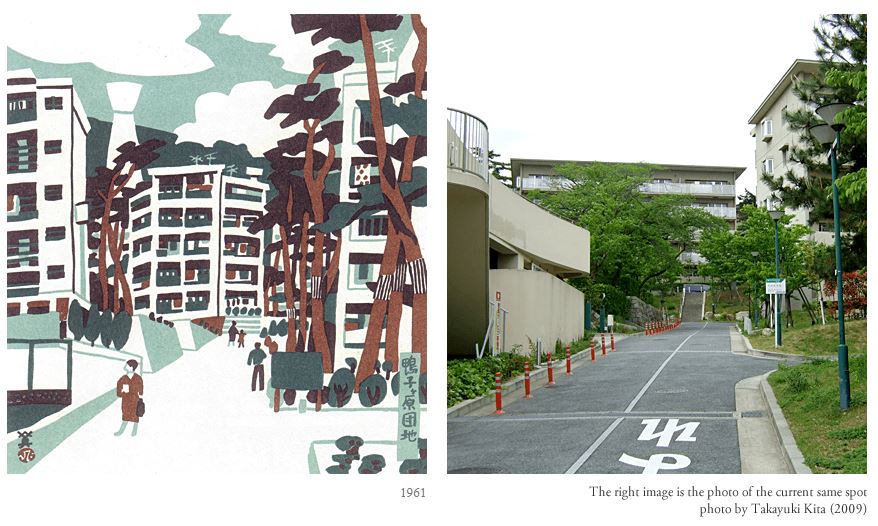
About 38 acres of land have been developed into a housing area at the foot of Mt. Rokko. Steel reinforced concrete apartment houses surrounded by natural green trees and shrubs, overlooking the sea is typical of the type of residential areas found in Kobe.
HAKUTSURU ART MUSEUM
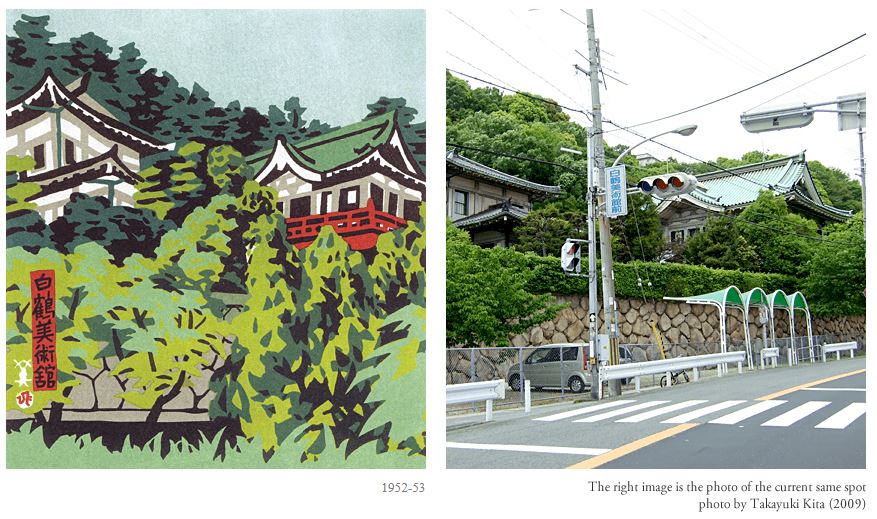
This museum, a replica of 16th century architecture, was established by Kano, the famous “Sake” brewer, and is known for its collection of Chinese bronze and ceramics.
NADA’S “SAKE” BREWERY
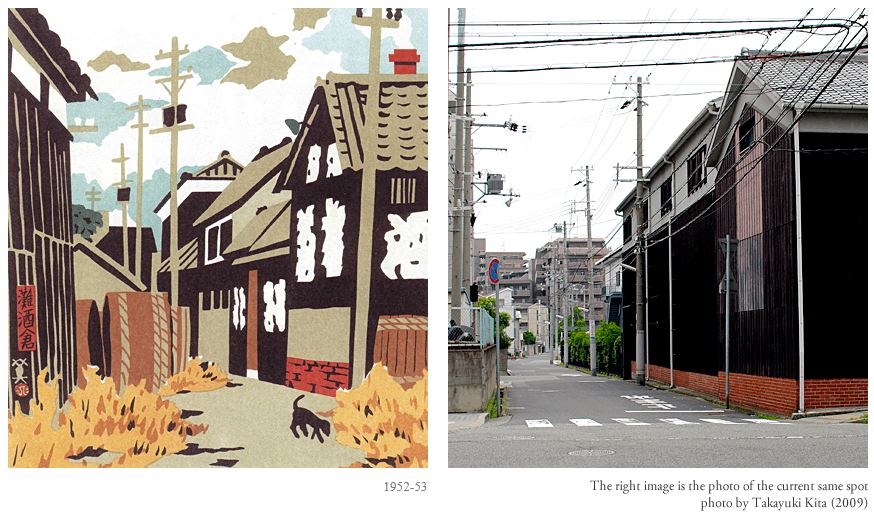
The Nada area, famous for its tasty “Sake”(Japanese wine), has 40 breweries which produce 12 million gallons annually.
MERCHANT MARINE COLLEGE
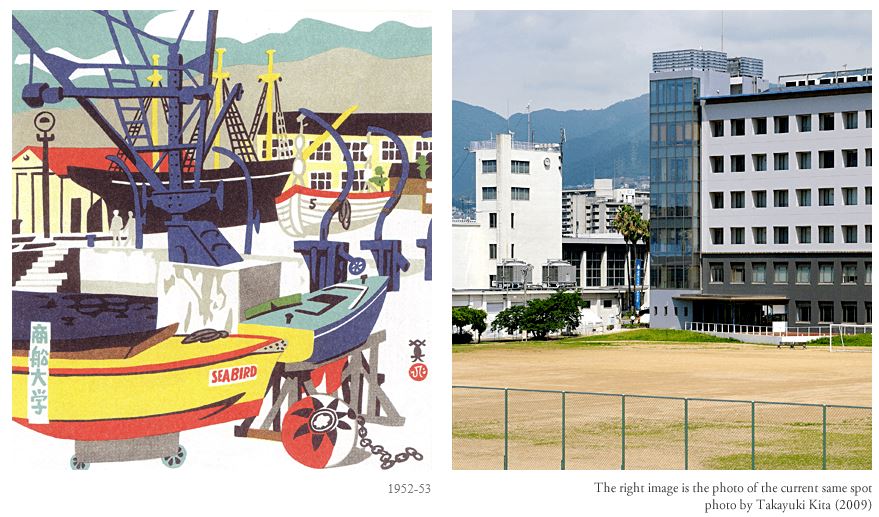
Opened in 1920 to train officers for Japanese merchant vessels, the college curriculum includes a training cruise every spring in the snowwhite schooner.
NADA INDUSTRIAL AREA
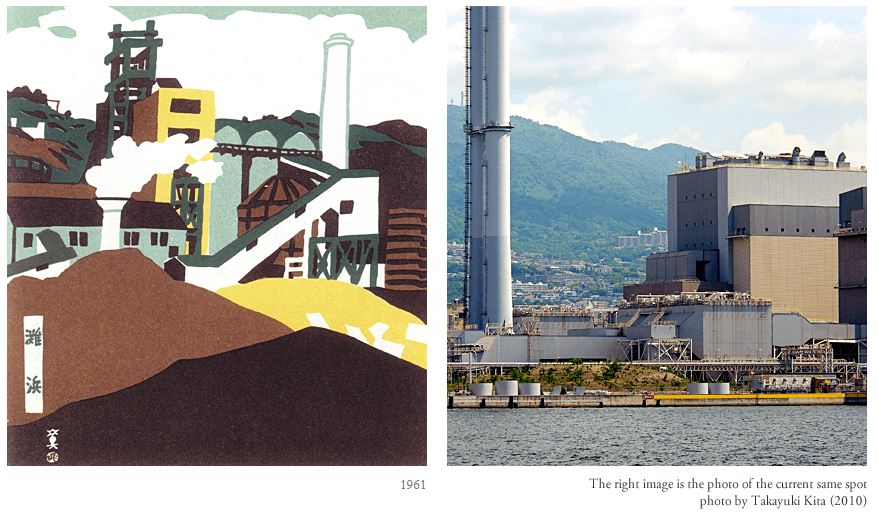
Because of the limited amount of land available for industry, a large scale land reclamation project has been initiated. This is a steel furnace built on reclaimed land in 1959.
FUKIAI
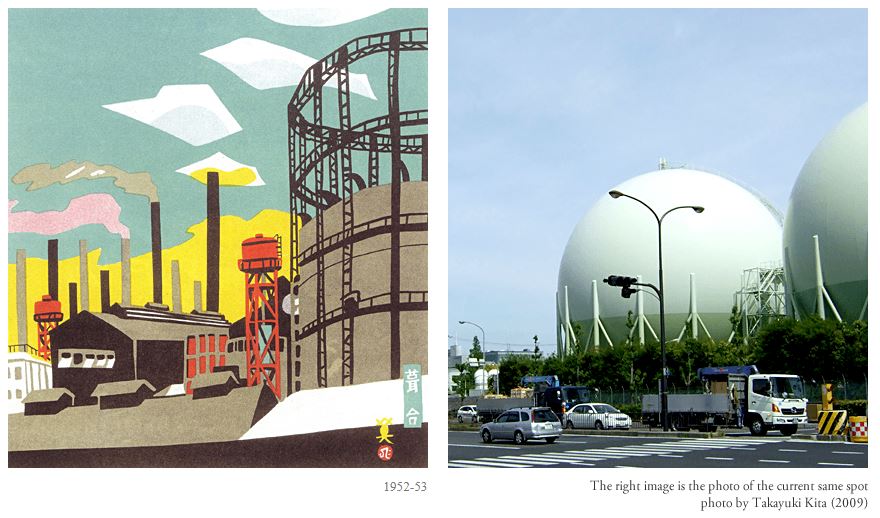
The Fukiai area is Kobe’s industrial center. The tall chimneys of the Kobe Steel and Kawasaki Steel Works and the large gas tank are signs of the growing industrial activities in this area.
CANADIAN ACADEMY
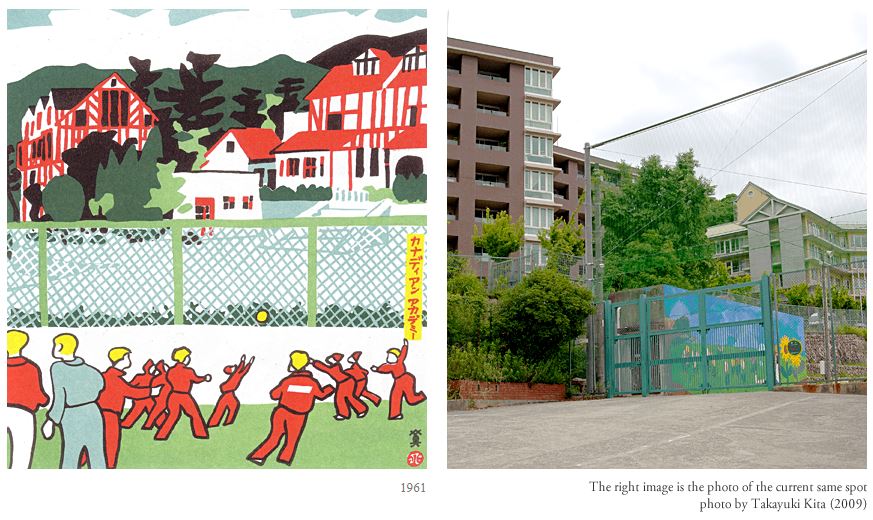
The Canadian Academy modeled after the school system of Ontario, Canada, was established by the Canadian Methodist Mission in 1903 to provide education for children of foreign families in this area. At present it offers a 12 grade curriculum to 300 pupils of more than twenty nationalities.
OHJI ZOO
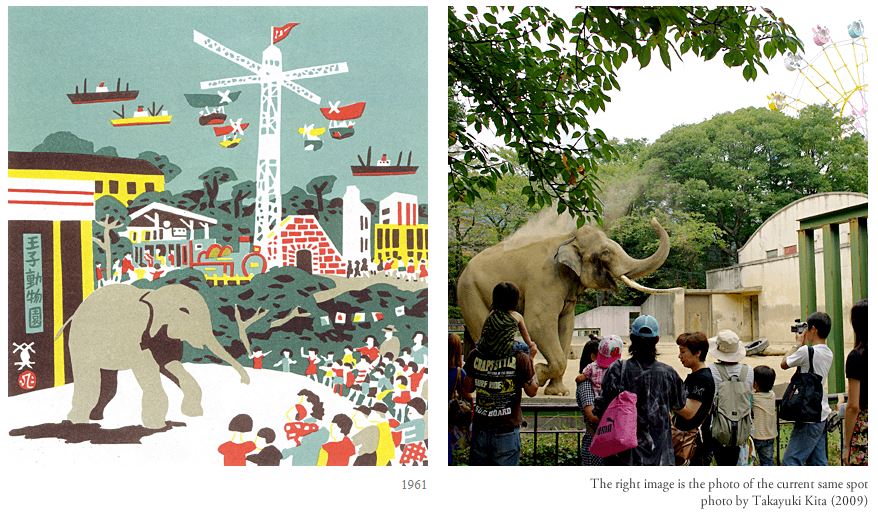
In addition to a wide variety of animals, the Zoo, opened in 1951, is famous for its beautiful cherry blossoms. The Zoo is open at night during the blossom-viewing season.
About Hide Kawanishi
Hide Kawanishi (1894 – 1965), a renowned woodblock print artist from Kobe, produced series of work titled “One Hundred Scenes of Kobe (Kobe Hyakkei)” twice in his lifetime. The first time between 1933 – 1936 he depicted the bustling cityscapes and lives of prewar days of Kobe. The second time, he produced poster color drawings of the changing city after the World War in the number of another one hundred in 1952 – 1953. Having revised or re-drawn one third of the latter, he published the “Collection of Artwork – One Hundred Scenes of Kobe (Kobe Hyakkei)” in 1962.
In his collection book published in 1965, Kawanishi wrote “I have never had a teacher of painting. I am absolutely self-educated and have painted what are not paintings. Having walked and found my own path, I am just what you may call a dilettante. I may complain about losing my youth, but there are things that I shall never lose such as innocent mind and thrills, creativity, originality, and a fresh sense of popularity and clarity. To become plain is the last thing I want to be.” This “One Hundred Scenes of Kobe (Kobe Hyakkei)” is, I believe, a straightforward representation of his words.
Enchanted by Kawanishi’s One Hundred Scenes of Kobe, we haunted around the city for two years visiting the locations of those scenes one by one. we must say that we were driven by the magic of Hide Kawanishi in his enthusiasm of grasping the deep spirit and fantasy of Kobe out of the unique architecture scattered in the city.
Frequently Asked Questions
Who was Hide Kawanishi, and what is his significance in Kobe’s history?
Hide Kawanishi was a renowned woodblock print artist from Kobe, whose significance lies in his remarkable series of artwork titled “One Hundred Scenes of Kobe.” His illustrations captured the bustling cityscapes and lives of prewar days in Kobe, as well as the changing city after World War II. His artistic legacy continues to enchant people even today, showcasing the beauty and spirit of Kobe through his unique perspective.
What is the story behind Hide Kawanishi’s “One Hundred Scenes of Kobe” artwork?
“One Hundred Scenes of Kobe” is a collection of artwork created by Hide Kawanishi in two phases of his life. The first series, produced between 1933 and 1936, portrays the vibrant prewar scenes of Kobe. The second series, consisting of another one hundred illustrations, was drawn in 1952-1953 and depicted the city’s transformation after the war. In 1962, Kawanishi published the “Collection of Artwork – One Hundred Scenes of Kobe,” which preserves the essence of Kobe’s history through his artistry.
How does Takayuki Kita’s contemporary photographs compare with Kawanishi’s illustrations?
Takayuki Kita’s contemporary photographs provide a captivating opportunity to compare Kawanishi’s historic illustrations with modern-day scenes in Kobe. Kita was inspired by Kawanishi’s magical depictions of the city and spent two years searching for the exact locations depicted in the artwork. His photographs, juxtaposed with Kawanishi’s illustrations, offer a surreal and fascinating exercise in witnessing the changes and continuity of Kobe’s unique architecture and landscapes over the decades.
Where can I view all 100 illustrations along with their modern counterparts and Google Map locations?
To explore all 100 illustrations by Hide Kawanishi and their corresponding contemporary photographs, along with Google Map locations, you can visit the official Kobe City website. There, you’ll find a captivating visual journey that showcases the timeless beauty of Kobe through the lens of two talented artists, Kawanishi and Kita. Additionally, used copies of the original book “One Hundred Scenes of Kobe” can be found on various online platforms for those interested in owning this extraordinary piece of Kobe’s history.
What is the historical importance of Kobe as a trading port between Japan and the Asian Continent?
Kobe has a storied history as a trading port between Japan and the Asian Continent, dating back a thousand years. Its significance lies in its role as an international gateway for commerce and cultural exchange. On January 1, 1868, Kobe was officially opened as an international port, marking a crucial moment in Japan’s development as a modern nation. Since then, it has played a pivotal role in facilitating trade and fostering economic growth for the country.
How has Kobe’s role as an international port influenced Japan’s development?
As an international port, Kobe’s development has been instrumental in shaping Japan’s economic landscape. Handling 37% of Japan’s total exports and 20% of its imports, Kobe has become a vital hub for global trade. Its strategic location and well-equipped port facilities have contributed significantly to Japan’s industrialization and international relations.
What are the top tourist attractions in Kobe, and how does the number of visitors vary each year?
Kobe boasts a wealth of tourist attractions that continue to draw visitors from all over the world. Each year, the number of tourists visiting the city has been steadily increasing. When ocean liners dock in Kobe, tourists often take the opportunity to explore not only the city but also nearby ancient gems like Kyoto and Nara, showcasing the richness of cultural experiences available in the region.
Can you describe the significance of the Nada area and its renowned “Sake” breweries?
The Nada area in Kobe is renowned for its delicious “Sake” (Japanese wine), with 40 breweries producing an impressive 12 million gallons annually. Nada’s “Sake” breweries have a long-standing tradition and are celebrated for their craftsmanship and unique flavors. For enthusiasts and connoisseurs alike, visiting the Nada area provides an authentic taste of Japan’s rich sake culture.
What unique architectural landmarks can be found in Kobe, as depicted in Kawanishi’s artwork?
The artwork by Hide Kawanishi beautifully captures some of Kobe’s unique architectural landmarks that have become iconic symbols of the city. These structures showcase the city’s blending of tradition and modernity. Through Kawanishi’s illustrations, viewers can witness the stunning blend of historical charm and contemporary allure that defines Kobe’s architectural landscape.
How does the Canadian Academy in Kobe provide education for children of foreign families in the area?
The Canadian Academy in Kobe was established in 1903 by the Canadian Methodist Mission, with the aim of providing education for children from foreign families residing in the area. The academy follows a 12-grade curriculum and welcomes pupils from over twenty different nationalities. Modeled after the school system of Ontario, Canada, the Canadian Academy offers a diverse and enriching learning environment for students seeking an international education experience in Kobe.
